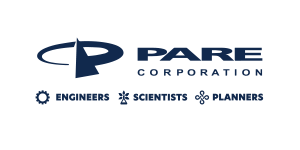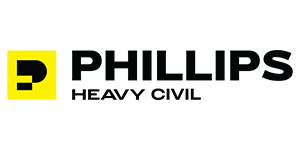Resource
Celebrating the Value of Dams and Levees - Yesterday, Today and Tomorrow
Conference Theme
Is This Community Worth Saving? (Robert Beduhn, HDR)
Unintended Consequences of Dam Removal (Melinda Dirdal, Greg Paxson and Dave Campbell, Schnabel Engineering)
The Kentucky River: Managing 19th Century Infrastructure to Meet 21st Century
Needs (Daniel A. Gilbert, Jeffrey S. Dingrando and April L. Welshans, Stantec
Consulting Services, Inc.; and David Hamilton, Kentucky River Authority)
Historical Perspective — Dams, Hydro, and Multi-Purpose Projects (David Kleiner, MWH)
Would Texas Be Texas Without Dams? (John L Rutledge, Freese and Nichols, Inc.)
Discussing the Benefits of Dams with your Friends and Neighbors, the Media, and
the Guy Sitting Next to You on the Plane (Amanda Sutter, Corps of Engineers)
A Race Against Time, America’s Flood Risk from Aging Dams (Jason Wilson, Southern Company)
Hydraulics
Use of Labyrinth Piano Key Weir (PKW) Spillway to Improve Dam Safety for
a Large Set of Dams (Frédéric Laugier, Julien Vermeulen and Thomas Pinchard, EDF-CIH)
Ensuring Water Supply Reliability with Innovative PK Weir Spillway Design (G. Robblee, S. Kees and B.M. Crookston, Schnabel Engineering; and K. Keel, Town of Hillsborough)
Importance of Site Considerations for Labyrinth Spillway Hydraulic Design —
Upper Brushy Creek Dam 7 Modernization (Tina Stanard and Victor Vasquez, Freese and Nichols, Inc.; Ruth Haberman, Upper Brushy Creek Water Control and Improvement District; Blake Tullis,
Utah State University; and Bruce Savage, Idaho State University)
Using HEC-RAS 2 Dimensional Capability for Dam Break Analysis (Wesley Crosby, Corps of Engineer)
Combined 1-D and 2-D Modeling with HEC-RAS for Elk City Dam (Samantha Palmason, Corps of Engineers)
2D or not 2D: Cases Studies in Application of HEC-RAS 5.0 2-Dimensional (Modeling Capabilities Kevin Ruswick and Gregory Daviero, Schnabel Engineering)
Automated Incremental Hazard and Sensitivity Analysis of a Hypothetical Dam Breach Model (Mikell Warms, Dan Christensen and Christopher Goodell, WESTConsultants, Inc.; and Cynthia Oestreich, Aista Utilities)
HEC-MetVue — Tool for Real-time Forecasting; Analyzing, Transposing and Rotating Storms; Development of Design Storms (Simeon Benson, Corps of Engineers)
GSSA Modeling for Analysis of Flood Design Features at the Picayune Strand Restoration Project (Charles W. Downer, Jaime A. Graulau-Santiago, Brian E. Skahill, David M. Weston, Nawa Raj Pradhan and Aaron R. Byrd, Corps of Engineers)
Using the Variable Infiltration Capacity Model in a Semi-Stochastic Format for Hydrologic Hazard Estimates for Dam Safety Risk Analysis (Frank Dworak, Bureau of Reclamation)
Dynamic Desert Floods at a Dry Dam (Robert A. Eichinger, Zachary Whitten and Michael Gerlach, Stantec Consulting Services, Inc.)
Cultivating Ingenuity and Safety In Alabama: The Taming of Lake Ogletree
Reservoir (James R. Crowder, Brian M. Crookston, Bradley T. Boyer and J. Tyler Coats, Schnabel Engineering)
Replacing Ruby Dam Outlet Uses Computational Fluid Dynamics to Model Energy Dissipation (Frank Lan, Robert Waddell and Michael Zusi, AECOM; and Brian Grant, Montana DNRC)
Reducing Scour with Flow Splitters, Extension Fins and Computational Fluid
Dynamics (Duane McClelland and Daniel Morse, CH2M; and Nathan M. Gullo and Jason A. Eichler, LCRA)
Sediment Transport Analysis in Support of Prado Basin Sediment Management Project (Craig P. Baxter, Golder Associates Inc.; Nathan Scheevel, Scheevel Engineering, LLC; and George W. Annandale, Golder Associates Inc.)
Verification of Sediment Yield Calculations in the Arid Southwest (Brian Wahlin and Jesse Piotrowski, WEST Consultants, Inc.; and Chuck Davis, Beaver Creek Hydrology)
Post-Removal Reservoir Erosion: Elwha Dam and Glines Canyon Dam Removals, Washington (Jennifer A. Bountry, Bureau of Reclamation; Andy Ritchie, National Park Service; and Timothy J. Randle, Bureau of Reclamation)
Unit Hydrograph Peaking Factors and their Application to PMF Simulations (Michael Bartles and Matthew Fleming, Corps of Engineers)
Areal Reduction Factors — Colorado Front Range and Analysis of the 2013 Storm (Doug Hultstrand and Bill Kappel, Applied Weather Associates, LLC)
Evaluating Effort Levels of Inflow Design Flood Study Methods for Dams (S. Samuel Lin, Federal Energy Regulatory Commission; and Jason E. Hedien, MWH Americas, Inc.)
Utilizing Regional Precipitation Frequency Relationships for Multiple Storm Types or Probabilistic Flood Hazard Assessment in the Tennessee River Watershed (Mel Schaefer, MGS Engineering; Keil Neff, Tennessee Valley Authority; Shaun Carney, Riverside Technology, Inc; Bruce Barker, MGS Engineering; George H. Taylor, Applied Climate Services; and Curt Jawdy, Tennessee Valley Authority)
Young Professionals
How Do They Do It? The Struggle of Juggling a Career and Parenthood and Feeling Successful in Both (Karen Aguillard, AECOM)
A Young Engineer’s Personal Experience at a Geotechnical Construction Materials Testing Firm and a Water Resources Design Firm (Jim P. Kirch, RJH Consultants, Inc.)
Red Rock Hydroelectric Project — Generating Power from Iowa’s Largest Lake (Rachael V. Bisnett, MWH)
Dam Risk Assessment’s Role in Preparing for Climate Change (Jessie Drayton, AECOM)
Modeling Efficient and Sustainable Hydroelectric Production at Small Dams through Artificially Induced Streamflow and Application of System Control (Rafey A. Siddiqui, Colorado State University; Bilal A. Siddiqui, DHA Suffa University; Ryan T. Bailey, Colorado State University; and Arif I. Osmani, Osmani & Co. Pvt. Ltd)
Assessment of Changing Climate on River Discharge in Regions with Lack of Hydrological Data (Fariborz Nasr-Azadani, West Virginia University)
Use of Inverse Analysis of Pore Water Pressures to Estimate Changes in Hydraulic Conductivity Resulting from Backward Erosion (Carolyne Bocovich, Wim Kanning and Michael Mooney, Colorado School of Mines)
From Runways to Spillways: A Case Study from the Aerospace Industry on Adoption of Non-Destructive Inspection Tools with Lessons for the Dam Safety Community (Minal L. Parekh, Colorado School of Mines; and Jennifer Schneider, Boise State University)
Influence of Vertical Loading Conditions and an Overlying Cohesive Material on the Initiation of Backwards Piping Erosion (Joy C. Foley and Mary G. Weiss, Colorado School of Mines)
Stuck between a Dam and a Small Space (Micah S. Smidt, RJH Consultants, Inc.)
Considerations During Site Exploration Activities (Marie A. Maher and Derek L. Hodnett, Terracon Consultants, Inc.)
Phased Investigation Approach for a Partial Slope Failure on the Rio Grande (Isaac J. Stephens, Lucas A. Walshire and Joseph B. Dunbar, Corps of Engineers)
When the Channel Can’t Handle — Use 2-D Hydraulic Modeling to Evaluate Flood Risks Posed by a Channel Adjacent to the Downstream Toe of an Embankment Dam (Tracy E. Owen, RJH Consultants, Inc.)
Monitoring
2015 USACE Instrumentation and Monitoring Program: Internal Peer Review Results (Georgette Hlepas and Travis Tutka, Corps of Engineers)
The Hydrogeological Model of Boone Dam (Scottie Barrentine, Andrew Dodson and Lindsay McMichen, Tennessee Valley Authority)
*Relearning How to Look at Piezometric Data for Seepage Evaluation (Richard S. Olsen and Isaac J. Stephens, Corps of Engineers)
Evaluation and Monitoring Response to Upstream Slope Failure at an Embankment Dam (Jay N. Stateler and Jeff Wormer, Bureau of Reclamation)
On Calero Pond: Evaluation of Downstream Wetland and Potential Dam Seepage (Matthew Powers, GEI Consultants Inc.; Bal Ganjoo, Santa Clara Valley Water District; and Mark Freitas, GEI Consultants Inc.)
Maintaining Performance — Rehabilitation of Critical Drains at Crab Orchard Dam (David Snyder and Robert Saber, Gannett Fleming, Inc.; and David Hibbs, U.S. Fish and Wildlife Service)
Foundation Protection during Post Tensioned Anchor Construction (William B. Stiller and Y. Erwin Supranata, HDR; and Stephen J. Mockler, Brookfield Renewable Energy Group)
Environment
Modeling Flow Conditions with Respect to Salmon Survivability with Modernized Lockage Control Systems at Hiram M. Chittenden Locks (Eric Andersen and Adam Price, Corps of Engineers)
Buchanan Dam — Keeping Current for Eight Decades (Victor M. Vasquez, Freese and Nichols, Inc.; Doug Witkowski, Lower Colorado River Authority; M. Leslie Boyd, Freese and Nichols, Inc.; Monica Masters, Lower Colorado River Authority; and Layne Bukhair, Freese and Nichols, Inc.)
Risk Management for Dam Construction Projects — An Owner’s Perspective (Susan S. Hou, Tedman Lee, Alan Johanson, and Daniel L. Wade, San Francisco Public Utilities Commission)
New Hope for Hope Mills, NC (Adam Paisley and Mark Landis, Schnabel Engineering; and Del Shannon, ASI Constructors, Inc.)
Reservoir Sustainability Planning and Prioritization (Sean Kimbrel, Kent Collins and Tim Randle, Bureau of Reclamation)
Incorporating Climate Change Projections into a Hydrologic Hazard Analysis for Friant Dam (Nicole Novembre and Kathleen D. Holman, Bureau of Reclamation; Victoria Sankovich Bahls, American Meteorological Society; and John F. England, Corps of Engineers)
Global Climate Change, Dams, Reservoirs, and Related Water Resources — A Bulletin by the ICOLD Technical Committee (Ron Lemons, Freese and Nichols, Inc.)
Seismic
Clover and Junction Dams: Risk-Based Seismic Evaluation of Two Slab and Buttress Dams (Scott Jones, Steve O’Brien and David Hughes, AECOM)
Extended Finite Element Method (FEM) Analysis of Dam–Water–Foundation Systems (Arnkjell Lokke and Anil Chopra, University of California, Berkeley)
Nonlinear Seismic Evaluation and Acceptance Criteria for Arch Dams (Yusof Ghanaat, Quest Structures, Inc.)
Developing Time Histories with Acceptable Record Parameters for Dillon Dam (Dina Bourliea Hunt, MWH Global; Justin Beutel, Pacific Gas and Electric Company; and Christine Weber, MWH Global)
Seismic Hazard Assessment and Input Data Generation for Dynamic Assessment: Overview of the Challenges and the Incoming Developments in a Moderate Seismicity Context (Nicolas Humbert, Emmanuel Robbe and Deborah Sicilia, Electricite de France (EDF))
Seismic Deformation Analyses of Embankment Dams: A Reviewer’s Checklist (Ross W. Boulanger, University of California, Davis; and Michael H. Beaty, Beaty Engineering LLC)
Lessons from Earthquake Lake in Preparing for Seismically Induced Landslides (Roger L. Kay, Corps of Engineers)
Concrete
Non-Destructive Testing of Post-Tensioned Anchorages at JT Myers and Markland Dams (Robert F. Lindyberg and Afshin Karshenas, FDH Velocitel; Jeff Lillycrop, Charles E. Wiggins, Larry L. Dalton II and Matthew Watts, Corps of Engineers; and Brandon Compton, FDH Velocitel)
USACE Portland District Spillway Gate Rehabilitation Program (Matthew Craig, Laurie Ebner, William Fortuny, David Hamernik, Matt Hess and Mark Sawka, Corps of Engineers)
Lessons Learned from the Spillway Gate Failure at Folsom Dam (Jerzy Salamon, Bureau of Reclamation)
A Finite Element Approach to Predict the Stability of Gravity Dams Laying on Rough Rock Interfaces (Sylvain Renaud and Najib Bouaanani, Polytechnique Montréal; and Benjamin Miquel, Hydro-Québec)
Applications of FLOW-3D for Stability Analyses of Concrete Spillways at FERC Projects (Elise Dombeck, Federal Energy Regulatory Commission)
The Stability of Masonry Walls and Dams: A Review of the Historical Design of Concrete Dams (Kevin Griebenow, Federal Energy Regulatory Commission)
A New and Advanced Dam Performance and Response Integration Program (Ziyad Duron, Harvey Mudd College; and John Yen, Southern California Edison)
Practical Analysis and Assessment of AAR-Affected Dams and Hydroelectric Plants (Dan D. Curtis, Lingmim (Frank) Feng, Gurinderbir S. Sooch and Jiqin (Tom) Zheng, Hatch, Ltd; and John Fletcher, NB Power)
Using the Trial Load Method to Optimize Feasibility Design of Watana Dam (Aled Hughes, Glenn Tarbox and Brian Sadden, MWH Americas, Inc.; and Bryan Carey, Alaska Energy Authority)
Linear and Nonlinear Seismic Analysis for the Post Tensioning System Design of the Wanapum Dam Spillway Monoliths (Juan E. Quiroz, Bashar S. Sudah, Bryan J. Brumley, David P. Thompson and Richard E. Barrie, MWH)
Rehabilitation of 85-Year-Old Ruskin Dam (Shaikh (Tasnuba) Islam, Mazin Ezzet and Dudley R. Morgan, Amec Foster Wheeler; and Saman Vazinkhoo, BC Hydro)
Tensile Strength of Mass Concrete — Implication of Test Procedures and Size Effects on Structural Analysis of Concrete Dams (Timothy P. Dolen, Dolen and Associates; David W. Harris, Consultant; and Larry K. Nuss, Nuss Engineering)
Static and Dynamic Mass Concrete Material Properties of a Concrete Gravity Dam (Soheil Razavi Darbar, David Queen and Chris Hatton, BC Hydro; Timothy Dolen, Dolen and Associates LLC; and Katie Bartojay, Bureau of Reclamation)
Levees
National Levee Safety Program (Eric Halpin, Corps of Engineers)
Using Risk Assessment to Inform Levee System Evaluation Decisions for the National Flood Insurance Program (David A. Margo, Lea G. Adams, Scott E. Shewbridge and Richard Varuso, Corps of Engineers)
Strategic Communication of Risk in Mid-Continent Levee Systems (Alan Tamm, Rodney Delp and Melissa Mullen, Corps of Engineers)
Using Tolerable Risk Guidelines in the California Delta (Lawrence H. Roth and Jessica Ludy, Arcadis U.S.)
Simplified Conservative Flood Wave Mapping: Breaking Free of the Break Location (Brent Travis and Brian Wahlin, WEST Consultants, Inc.)
Levees and Vegetation: Application of Current USACE Guidance in the Technical Analysis of a Vegetation Variance Request (Charles Ifft, Corps of Engineers)
A Simplified Cost-Benefit Study for Remediating West Sacramento Levee Embankments for Seismic Hazard (Richard Millet, Rajendram Arulnathan, Kanax Kanagalingam, Erik Julian and Robert K. Green, AECOM; Ariya Balakrishnan, California Department of Water Resources; and Joanna Leu and David Ford, David Ford Consulting Engineers)
Emergency Flood Fight Techniques, Mississippi River Levees 2011 Flood (Lanny B. Barfield, Corps of Engineers)
Using HEC-RAS 2D for Potential Levee Breach Inundations during Real-time Flood Events (Wesley Crosby, Corps of Engineers)
*Geotechnical Evaluation of the Levees in the Central Valley, California (Richard Millet, AECOM; Steve Mahnke, California Department of Water Resources; Mary Perlea, Corps of Engineers; and Ray Costa, Geotechnical Consultant)
The Courchesne Levee Reach and the Challenges and Value of Levee Improvements in Arid Urban Settings (Juan C. Vargas, AECOM; Valentin Arzola and Jose Nunez, International Boundary and Water Commission; and Khaled Chowdhury and Jinwei Qiu, AECOM)
Embankment Dams
Reducing Uncertainties when Assessing the Stability of Rockfill Dams: Characterizing Analysis Parameters (Daniel B. Rogers, Kyle R. Blakley and Jeffrey S. Dingrando, Stantec Consulting Services Inc.; and Jeff W. Munsey, Tennessee Valley Authority)
Don’t Judge a Rockfill Dam by its Name Alone (Brian Benson and Peter Amos, Damwatch Engineering Ltd)
Shear Strength of Compacted Beaumont Clay for Consolidated-Undrained Conditions (Mark J. Thompson and David J. Bentler, CH2M; Thomas L. Brandon, Virginia Polytechnic Institute and State University; and Daniel R. VandenBerge, Tennessee Technological University)
Estimating the Peak Friction Angle of Sandy Soils In Situ with State-Based Overburden Normalized CPT Tip Resistance (Robert A. Jaeger, GEI Consultants, Inc.; and Ian P. Maki, California Department of Water Resources)
Decades of Foundation Deterioration Threatening Public Safety (George L. Sills, George Sills Geotechnical Engineering Consultant, LLC; and Leslie F. Harder, HDR)
An Empirical Model for Estimating Internal Erosion Critical Gradients for InclinedExit Face Conditions (Richard A. Keizer, GEI Consultants, Inc., John D. Rice, Utah State University; and Robert A. Jaeger, GEI Consultants, Inc.)
Laboratory Measurements of Critical Gradients of Cohesionless Soils (Bryant A. Robbins, Axel Montalvo-Bartolomei, Jamie López-Soto and Isaac J. Stephens, Corps of Engineers)
Reliability Slope Stability Analysis for Rapid Drawdown (Mark J. Thompson and David J. Bentler, CH2M; and Thomas L. Brandon, Virginia Polytechnic Institute and State University)
Embankment Dam Analysis Parameters Estimated from 100 Years of Laboratory Tests (David W. Harris, David Harris Engineering and Assistance, LLC/Allegiance Consulting, LLC; and Garrett Sutley, Bureau of Reclamation)
The Caribbean Commonwealth: Case History of Patillas Dam, Puerto Rico (Molly S. O’Connor, Black & Veach; José M. Bermúdez Díaz, Puerto Rico Electric Power Authority; and Dennis Hogan and Brandon Gomer, Black & Veach)
Calaveras Dam Replacement Project — Providing a Seismically-Reliable Water Source (John Roadifer and Michael Forrest, AECOM; and Daniel Wade, Susan Hou, Tedman Lee and Carman Ng, San Francisco Public Utilities Commission)
Dam Decommissioning
USSD Guidelines for Dam Decommissioning Projects (Tim Randle, Bureau of Recalmation)
Non-Linear Modeling of Sediment Retention Structures for Dam Removal Project (Kristen M. Martin and Erik J. Malvick, California Department of Water Resources)
Recent Progress Towards Removal of Matilija Dam (Seth Gentzler and John Roadifer, AECOM; Derek Booth and Yantao Cui, Stillwater Sciences; and Peter Sheydayi, Ventura County Water Protection
District Dam Safety)
Risk Analysis Work for Dams — “Big Picture” Considerations (Jay N. Stateler, Bureau of Reclamation; Kim de Rubertis, Consulting Engineer; and Doug Boyer, Federal Energy Regulatory Commission)
Implementing a Risk-Informed Approach to Dam Safety in a Regulatory Environment (Douglas D. Boyer and William Allerton, Federal Energy Regulatory Commission)
Use of Quantitative Risk Results to Inform Dam Safety Governance: Practical Cases in Europe (Ignacio Escuder-Bueno, Universitat Politècnica de València; Adrián MoralesTorres, iPresas; and Jesica Tamara Castillo-Rodríguez, Universitat Politècnica de València)
The Role of Risk Assessment in the Bureau of Reclamation’s Dam Safety Program (William R. Fiedler and William Engemoen, Bureau of Reclamation)
Semi-Quantitative Portfolio Risk Assessment for Prioritizing Dam Safety Activities (John Yen, Matthew Muto and Nicolas Von Gersdorff, Southern California Edison Company; and Gregg A. Scott, Scott Consulting, LLC)
Bureau of Reclamation Risk-Informed Approach to Selecting the Inflow Design Flood (William R. Fiedler, Bureau of Reclamation; and John H. LaBoon, Consulting Civil Engineer)
The Wanapum Spillway Monolith Cracking Incident Dam Safety Management Implications (Robin G. Charlwood, Robin Charlwood & Associates; Adam N. Jones and Kevin Snyder, HDR; Kevin Marshall and David Mishalanie, Grant County Public Utility District No. 2)
Panama Canal Borinquen Dams and Third Set of Locks Operations and Maintenance Strategy (Rachael V. Bisnett, Wonnie Kim and Donald J. Montgomery, MWH)
Safety in Numbers? (Kim de Rubertis, Consulting Engineer)
Between a Rock and a Hard Place: Case History of Rockfall on Madison Dam (Katie Clarkson, Federal Energy Regulatory Commission; and Carrie Harris, NorthWestern Energy)
Public Safety and Security at Dams Are Not Mutually Exclusive (William F. Foos, Frank Calcagno and Paul G. Schweiger, Gannett Fleming, Inc.)
Emergency Action Planning — Canadian Practice and Lessons Learned at Ontario Power Generation (Tali Serota and Tony Bennett, Ontario Power Generation)
The Criticality of Engagement Before, During and After a Dam Safety Emergency (Bernie Auld, Benjamin Heath and Keil Neff, Tennessee Valley Authority)
A National Consequence Modeling Baseline (Will Breitkreutz, U.S. Army Corps of Engineers Construction)
Stagecoach Spillway Replacement and Performance at Electra Lake (Danielle Tripp Hannes and Stephen L. Jamieson, W. W. Wheeler and Associates, Inc.)
Soil Cement Quality Control/ Quality Assurance — Road Map to a Safe Embankment (Randall Bushey, Eduardo Gutierrez-Pacheco and Martin Murray, CH2M)
High Capacity Anchors on Existing Concrete Dams — Application to Two TVA Dams (Husein Hasan and Aaron Nottis, Tennessee Valley Authority; Brian Krohmer, Barnard Construction Company; and Dennis Triplett and Boris Caro Vargas, Nicholson Construction Company)
Lessons Learned on Post-Tensioned Trunnion Anchorage — Folsom Auxiliary Spillway (Cecily M. Nolan and Cheuk Y. Wan, Corps of Engineers)
Glenville Lake Dam Spillway Replacement and Dam Rehabilitation (Danielle Neamtu, Justin Boggs and Stephen L. Whiteside, CDM Smith; and Joseph Glass, City of Fayetteville)
Uncovering and Addressing a History of Significant Incidents After an Annual Dam Safety Inspection (Steven Davidheiser and Robert A. Kline, Jr., Gannett Fleming, Inc.; and Amanda Lothes, Newport News Waterworks)
Emergency Repairs to Prevent a Piping Failure in the Lake Manatee Dam (Jeffrey A. Beriswill and Nickolas J. Depin, Amec Foster Wheeler Environment & Infrastructure, Inc.; and Mark Simpson and Bruce MacLeod, Manatee County Utilities Department)
Seepage Control and Groundwater Management in an Earthen Embankment Reservoir — Boyette Road Reservoir Case Study (Randall Bushey, David Paiko and Curt Basnett, CH2M)
Jet Grouting for Echo Dam Seismic Remediation (Tara Schenk-McFarland and Mark Bliss, Bureau of Reclamation)
Improvements to Seepage Cutoff Wall Specifications Considering Lessons Learned from Construction (Michael Kynett, Corps of Engineers; Khaled Chowdhury and Richard Millet, AECOM; Mary Perlea, Corps of Engineers; and Francke Walberg, AECOM Foundations)
The Myth of the Perfect Seepage Barrier Wall (John W. France and Richard R. Davidson, AECOM; and Barney Davis and Michael Zoccola, Corps of Engineers)
Levee Assessment Tool: Using Limited Data to Inspect/Evaluate Levees for Various Failure Modes Against Established Criteria (A. Wohletz and S. Wiesner, Kleinfelder)
Fault Investigations During Borinquen Dam 1E Foundation Panama Canal Expansion (David Schug, Paul Salter, Dan Meier, Robert Urban, Chris Goetz, Lelio Mejia and James Toose, AECOM; and Derek Irving, Pastora Franceschi, Maximiliano De Puy, Jaime Arrocha and Roberto Miranda, Autoridad del Canal de Panamá)
3D Modeling at Boundary Dam, WA: Visualizing a Geologically Complex Site (Robert Cannon and Frederic Snider, Schnabel Engineering; Kim Pate and Andre Ball, Seattle City Light; and Gary Rogers and J. Hawkins Gagnon, Schnabel Engineering)
Underseepage and Heave Mitigation at Douglas Saddle Dam No. 1 (Daniel A. Gilbert, Alan F. Rauch and Paul J. Cooper, Stantec; and Scottie L. Barrentine, Tennessee Valley Authority)
A Deep Seepage Cutoff for the Thornton Composite Reservoir (Joseph R. Kovacich, MWH; Louis Storino, Metropolitan Water Reclamation District of Greater Chicago; Raymond J. Franz and Jonathon R. Bulger, Hayward Baker Inc.; and Brian J. Kazyak, MWH)
Designing a Hybrid Dam on a Geologic Profile with Highly Variable Engineering Properties (Richard E. Riker and Jacob Esterhuizen, CH2M; Don Deere, Deere and Ault Consultants, Inc.; and Gabriel Fernandez-Delgado, University of Illinois)
Lunch Presentation and Poster Session
Things You Wanted to Know About Individual Consulting, but Were Afraid to Ask (Larry K. Nuss, Nuss Engineering; and Kenneth D. Hansen, Consulting Engineer)
Construction of La Romaine Complex in Northern Quebec, Canada: Behaviour of Asphalt Core Rockfill Dams (Vlad Alicescu, Jean Pierre Tournier, Redha Kara and Dan Rosculet, HydroQuébec)
Selecting an Intensity Measure for Fragility Curves Derived from Performance Based Testing (Spenser Anderson, Kunal Menda, Mo Zhao and Ziyad Duron, Harvey Mudd College)
Quantifying Rock Scour Extent Using Physical Hydraulic Model Studies (George W. Annandale, Robert P. Humphries and Amanda J. Rock, Golder Associates, Inc.; and Michael S. McCray and Ron L. Adams, Corps of Engineers)
Retrofit and Closure of CCR Impoundments to Meet New Regulations (Matt Bishop, Brian Owens and Luke Williams, Amec Foster Wheeler)
Developing a Sediment Management Plan for Paonia Reservoir (Kent Collins and Sean Kimbrel, Bureau of Reclamation)
Antecedent Snow Covered Area Analysis for Inflow Design Floods (Steven F. Daly and Angela Duren, Corps of Engineers)
3D Rock Block Erodibility for Dam Foundations, Spillways and Tunnels (Michael George and Nicholas Sitar, University of California, Berkeley)
Evaluation of New Storage with Optimal Hydropower: Weiser-River Basin, Idaho (Jeremy Giovando, Corps of Engineers)
Innovative Approaches to Difficult Drilling Locations on High Hazard Dams (Benjamin A. Halada, Barry L. Bryant and Adam Crace, Stantec)
Cracking in Thin Arch Concrete Dam — LS-DYNA Nonlinear Dynamic Structural Analysis (Sherry Hamedian, Bureau of Reclamation)
Field Tests of Placed Riprap as Erosion Protection Against Accidental Overtopping and Leakage (Priska Helene Hiller, Fredrikke Kjosavik, Leif Lia and Jochen Aberle, Norwegian University of Science and Technology)
Underwater Concrete Repairs — Methods to Remove Concrete Around Eroded Areas to Allow for Proper Repair (Frank Immel, Global Diving & Salvage, Inc.; and Pat Winkler, Rampart Hydro Services)
Investing in Colorado Dam Rehabilitation Projects (Stephen L. Jamieson, W. W. Wheeler and Associates, Inc.)
Solving Numerous Dam Issues at Once-Updated Probable Maximum Precipitation for the Tennessee Valley Authority (Bill Kappel, Doug Hultstrand and Geoff Muhlestein, Applied Weather Associates, LLC; and Keil Neff, Tennessee Valley Authority)
Design-Build Construction of the Panama Canal Borinquen Dams 1W, 2W, and 2E (Gabriel Martinez, Wonnie Kim and Carlos Zambrano, MWH)
Developing an Updated PMP Estimate within the HMR 51 “Stippled Region:” Ball Mountain Dam (Charles McWilliams, Corps of Engineers)
The Need for Updating Site-Specific PMP Estimates: Lessons Learned and a Way Forward (Charles McWilliams, Corps of Engineers)
A Performance-Based Approach to Developing Fragility Curves for Structures Subject to Seismic Loading Conditions (Kunal Menda, Mo Zhao, Spenser Anderson and Ziyad Duron, Harvey Mudd College)
Implementing Lessons Learned from Wheeler Lock Collapse on New Lock Construction Projects (Michael A. Morrison, Tennesee Valley Authority; and Bernard Schulte, Corps of Engineers)
Integration of Multiple Geophysical Methods for the Development of a Hydrogeological Model in a Karst Terrane — Boone Dam (Jeffrey W. Munsey and Lindsay C. McMichen, Tennessee Valley Authority; Ronald D. Kaufmann, Spotlight Geophysical Services; and Kevin Hon, S&ME, Inc.)
Modernization of USACE Water Management Decision Support Systems (Chandra S. Pathak and Christopher Dunn, Corps of Engineers)
Research on Selected Failure Modes of Earthen Structures (Michael K. Sharp and Maureen K. Corcoran, Corps of Engineers)
Assessing and Evaluating the Operation of Pressure Cells in Embankment Dams: A Case Study of Five Iranian Embankment Dams (Bahareh Shoghli, University of North Dakota; Ali Asghar Mirghasemi, University of Tehran; and Yeo Howe Lim, University of North Dakota)
Stability of Slopes in Embankment Dams (Gopi Siddappa and Santhosh G. Gowda, P.E.S. College of Engineering)
An Unmanned Aerial Vehicle (UAV) Inspection of a Large Double Curvature Arch Dam (Frederic Snider, Tom Fitzgerald and Robert Cannon, Schnabel Engineering; and Joe Vaughn, Skyris Imaging)
Ritschard Dam Monitoring: Awareness Leads to Learning which Leads to Action (Ray D. Tenney and Don B. Meyer, Colorado River Water Conservation District; and Michael R. May, AECOM)
Application of Recent Wave Overtopping and Wind Studies Results on the Herbert Hoover Dike (Robert C. Tucker, Amanda B. Lavigne and Melissa J. Reynolds, Corps of Engineers)
Beat The Heat and Avert The Floods — Constructing Tempe Town Lake Dam (Stewart S. Vaghti, Gannett Fleming, Inc.; Adam Gordon, PCL Construction; Tim Weber, Gannett Fleming, Inc.; and Christopher Kabala and Andrew Goh, City of Tempe)
Integrated Geologic and Geophysical Investigation Program for Amistad Dam on the US-Mexico Border (Juan Vargas, Khaled Chowdhury, David Simpson and Kimberly Heenan, AECOM; Luis Hernandez, International Boundary and Water Commission; and Stephen Morris and Lisa Nowicki, Corps of Engineers)
Seismic Effects on Bridges — Structural Analysis of Pit River Bridge (Hillery Venturini, Bureau of Reclamation)
Analyzing Submerged Jet Erosion Test Data to Predict Scour of Cohesive Soils (Tony L. Wahl, Bureau of Reclamation)
Boundary Dam Spillway No. 2 Modifications (John Werner and James H. Rutherford, Hatch Associates Consultants Inc.; Kim Pate and Daniel Kirschbaum, Seattle City Light; Joe Groeneveld, Hatch Associates Consultants Inc.; Keith Moen, HDR; and Justin Arnold, Alden Laboratories Inc.)
The Schaake Property Habitat Improvement Project: A Case Study on Setting Back an Existing Levee to Enhance Flood Risk Management and Add Environmental Value (J. Woidt, CH2M; J. Graham and R. Hilldale, Bureau of Reclamation; T. Cotten, CH2M; and P. Monk, U.S. Fish and Wildlife Service)
Selecting A Damage Measure for Fragility Curves Derived from Performance-Based Testing (Mo Zhao, Spenser Anderson, Kunal Menda and Ziyad Duron, Harvey Mudd College)
































